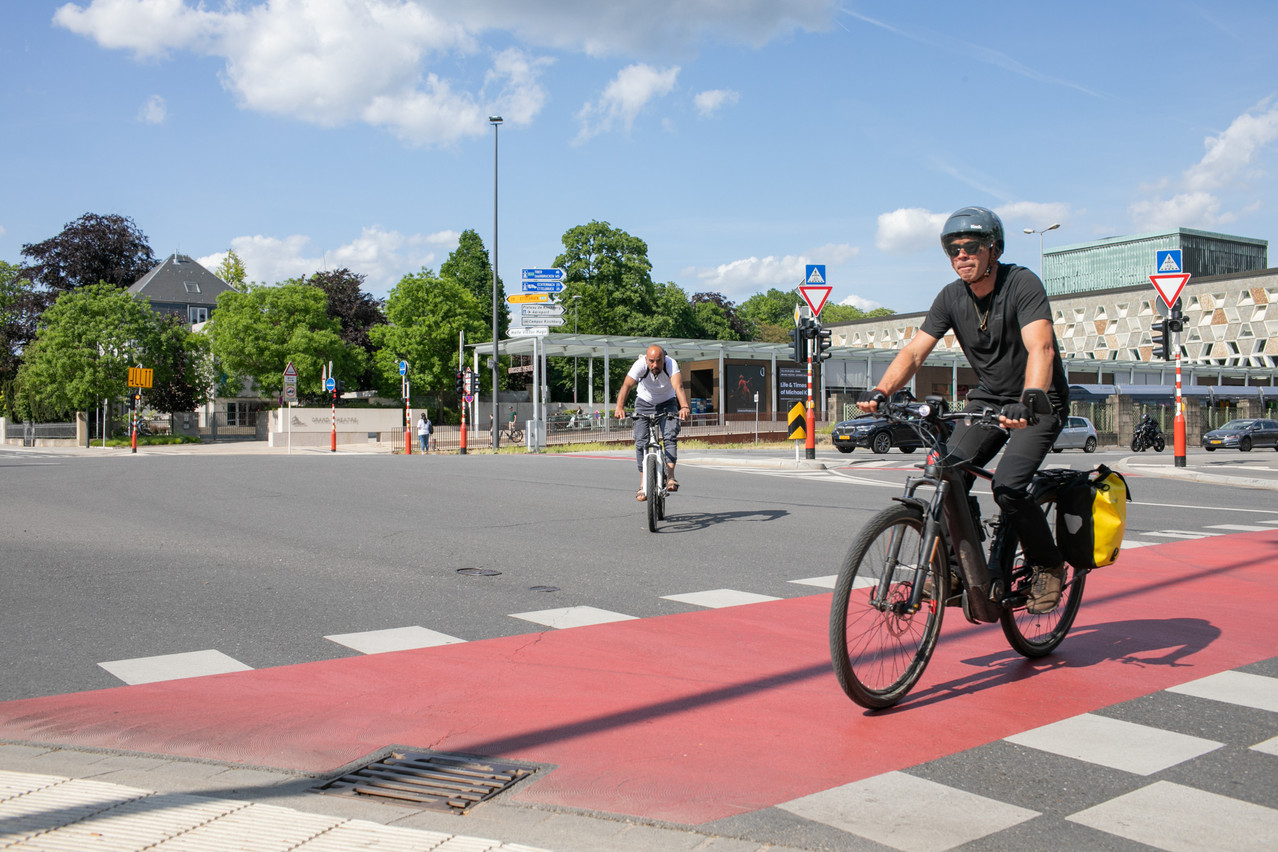16,449 (net) new inhabitants settled in Luxembourg City between 2017 and 2022, bringing the total to 132,778. Employment rose from 158,000 to 168,000 jobs. Residents, workers or simple visitors: how do they move around the capital? The City of Luxembourg has just presented its “balance sheet and outlook” on this subject.
1,819,148
The number of bicycle passages recorded has increased from 1,138,281 to 1,819,148 in five years, i.e., +680,867 (a growth of almost 60%).
-7,249
As the bicycle gains popularity, the car loses it. There were 374,748 motorised vehicles in the capital in 2022, 7,249 fewer than in 2017 (a drop of 1.9%). It should be noted that the City of Luxembourg is communicating here on the number of vehicles and not on the number of vehicle passages, as it did for bicycles. The values are therefore totally different and not comparable. When contacted, it had not yet provided the number of motorised vehicle passages at the time of publication of the article.
100%
All of Luxembourg city buses should be electric by 2030. When asked about the size of the fleet and the current share of electrics, the city had not responded at the time of publication of the article. They should also all be equipped with an on-board video protection system “by 2024.”
500
500 stops will be equipped with digital timetables by the end of 2024. The total number of bus stops has not been communicated either. The “Live-Paper” pilot project started in September 2021. The City of Luxembourg cites other digitalisation plans such as its new application for paying for parking, which will be rolled out throughout the city by 1 June 2023.
11
The capital lists nine cycling improvements made in recent years: the link between the station and Bonnevoie, the redevelopment of a two-way track on Avenue de la Gare and the construction of a track on Boulevard Roosevelt in 2019, another route along the tram route in 2020, the securing of cycle lanes with flower boxes on Rue Jean Origer in the same year, the installation of a cycle route on Avenue Pasteur in 2022, a final link on Rue Notre-Dame in 2023, the two-way lane on Boulevard Prince Henri in 2022 and the construction of an elevated lane on Avenue Marie-Thérèse in early 2023.
The raising of the cycle lane on Boulevard de la Pétrusse should be completed in 2024. And the construction of infrastructure dedicated to cycles along the municipal park should begin at the end of 2023. This makes a total of 11 projects.
124
124 Vel’oh stations exist in the country, 89 of which are in the capital. The self-service bicycle service celebrated its 15th anniversary in Luxembourg this year.
3
Three secure bicycle cages integrated into the M-Kaart network should be in place by June 2023 at the Place du Théâtre, the Hall Victor Hugo car park and rue de Hesperange (Dernier Sol).
3
The City of Luxembourg is also pleased with the introduction of its three pedestrian zones: rue Aldringen/Place Hamilius (2019), Rue Beaumont/Avenue de la Porte-Neuve/Rue des Capucins (2021) and Grand-Rue/Rue de la Boucherie (2023).
2
And two “meeting zones”: rue de Strasbourg (2020) and rue du Fossé (2021).
8
For the mobility of young children, the City of Luxembourg has implemented eight “Pedibus” lines--a service enabling children to walk to school in complete safety, in the company of their friends and supervised by local guides. One in Bonnevoie, three in Cents, one in Belair and three in Gasperich. It will “continue to evaluate potential new lines in other districts of the capital.”
Other figures have been made public recently, notably for the tram. Between 1 January and 14 February, an average of 7,409 people got on and off the tram every day. This compares with 3,396 in 2019, when free travel was not yet the rule and the tram only linked Luxexpo to the Place de l’Étoile.
This story was first published in French on It has been translated and edited for Delano.
